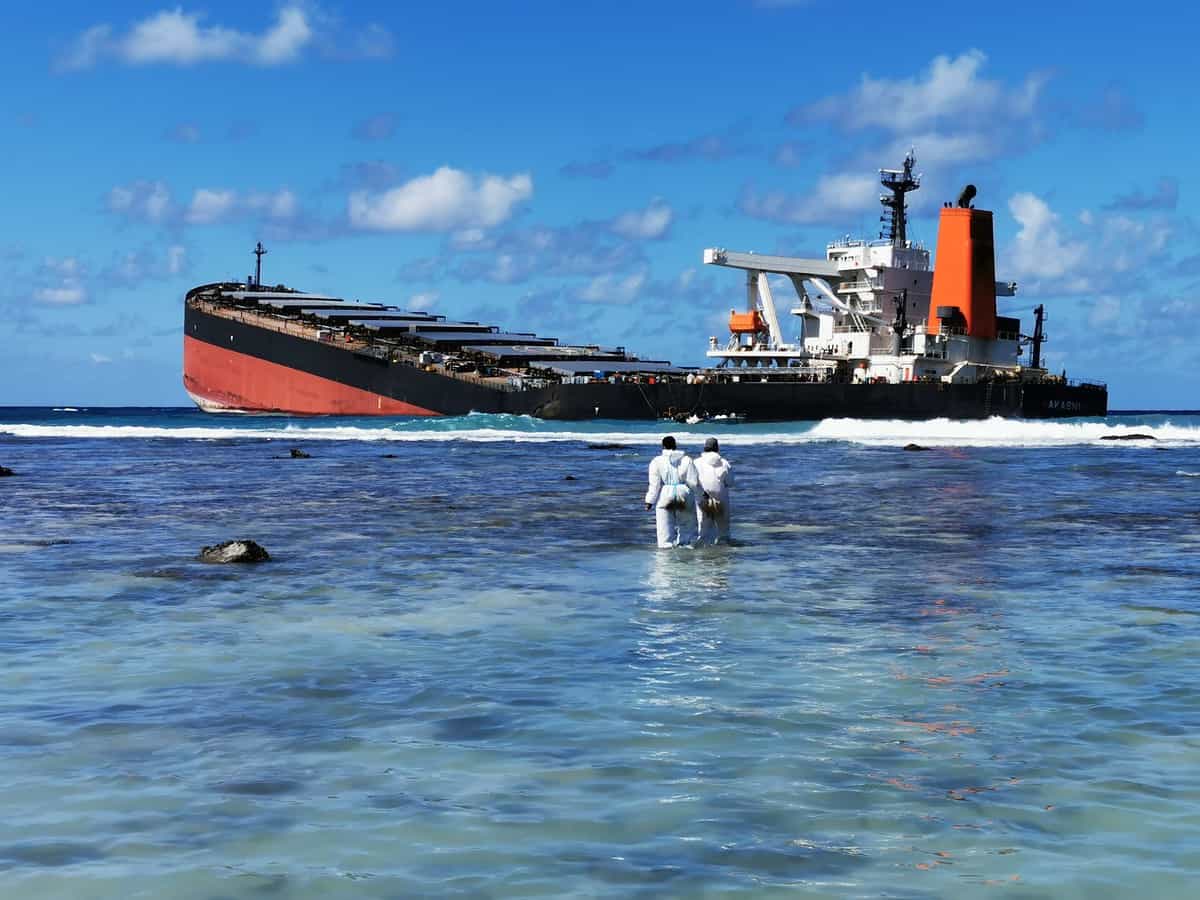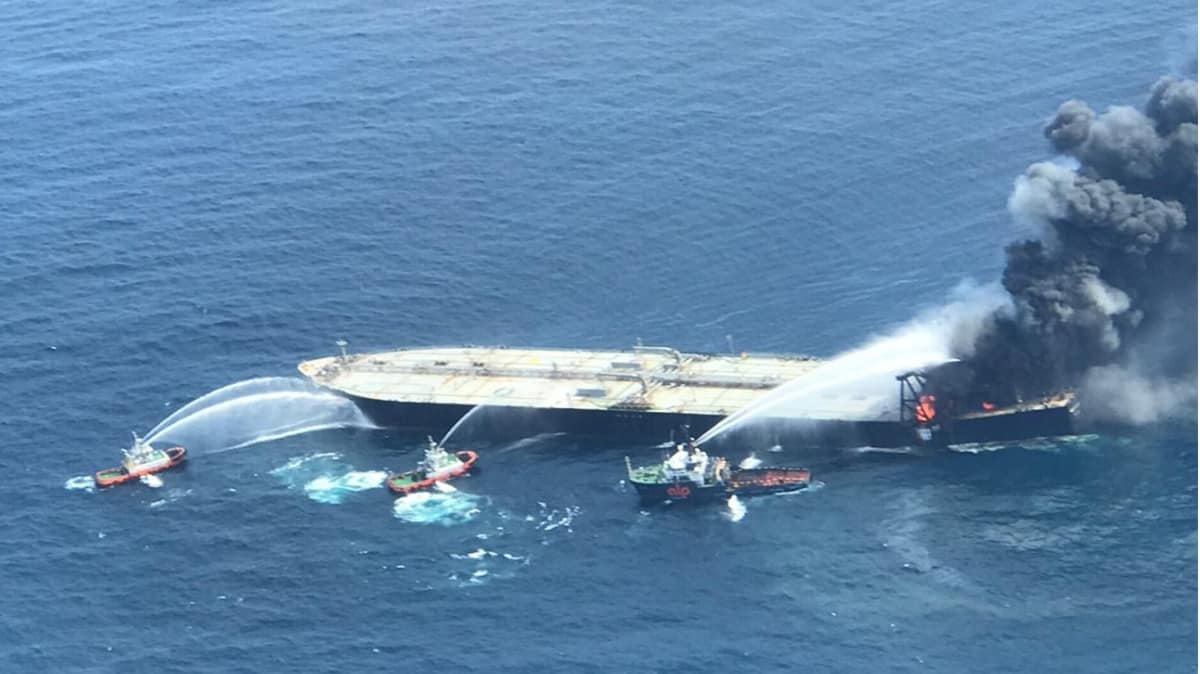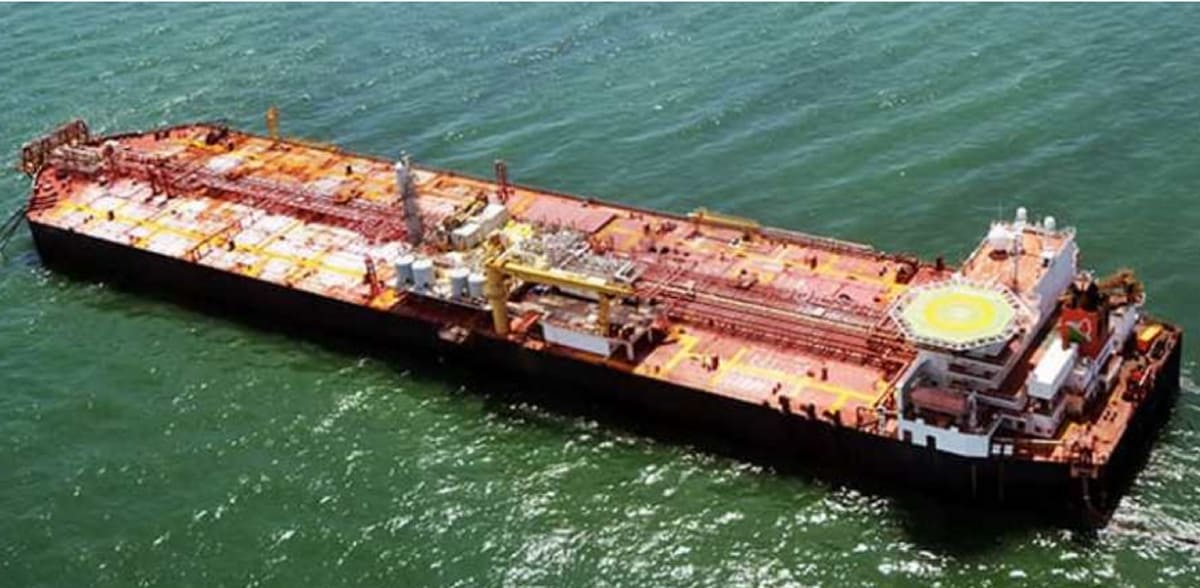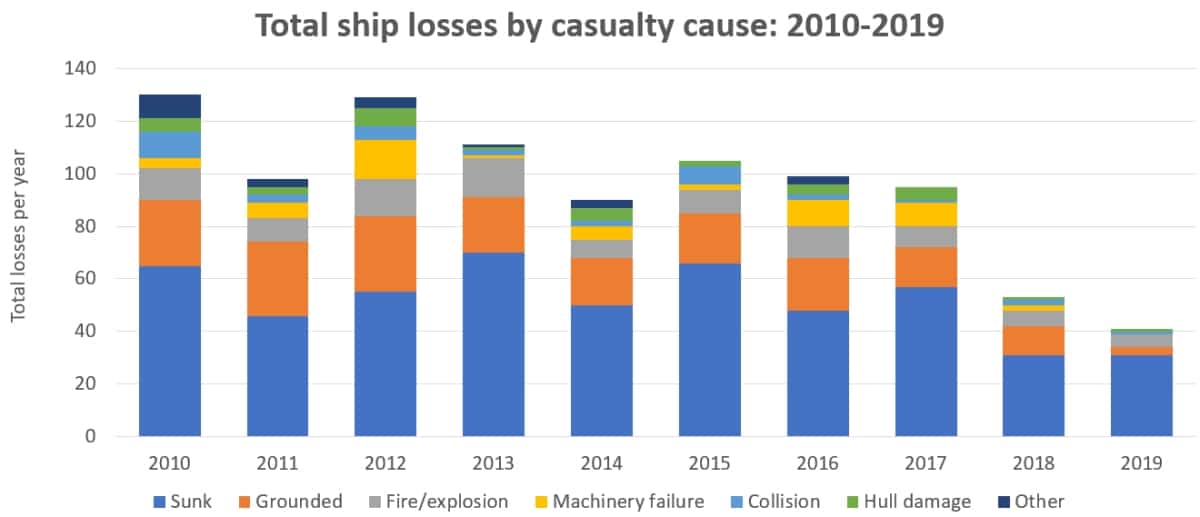A fully laden crude tanker went up in flames. A giant dry bulk ship broke in two on a reef, spilling fuel into pristine waters. A livestock carrier sailed into a typhoon, killing over 40 crew and 5,800 cattle. A tanker and barge collided, with 14 presumed dead. Another tanker, used to store crude oil offshore, began to take on water.
And all of that happened in the past six weeks.
The frequency of shipping casualties has dramatically decreased over recent decades. Ship losses fell to a record low last year. The new spike in casualties may be an anomaly, not a trend.
And yet, it’s happening at a time when COVID-19 safety fears are on the rise due to financial pressures and crew-change barriers — so there could be more trouble ahead.
Wakashio spill in Mauritius
The Japanese-owned, Panama-flagged dry bulk vessel Wakashio went aground on a coral reef off Mauritius on July 25. It began spilling fuel oil into a highly environmentally sensitive lagoon on Aug. 6
The 203,130-DWT vessel spilled an estimated 1,000 tons of fuel oil before it split in two on Aug. 15. Then, on Aug. 31, a tug and barge involved in salvage operations collided. Four crew drowned.

The Autoridad Maritima De Panama (AMP) is investigating the Wakashio grounding. AMP confirmed Tuesday that the ship had been en route from Singapore to Brazil when the captain diverted from the safe course.
A crew birthday party was underway, reported the AMP. The captain ordered the ship to sail close to Mauritius “to look for a telephone and internet signal in order for the crewmembers to communicate with their families.” In response, authorities in Mauritius arrested the ship’s Indian captain and Sri Lankan chief officer.
Gulf Livestock 1 sinking in East China Sea
The Panama-flagged livestock carrier Gulf Livestock 1, operated by Dubai’s Gulf Navigation, departed Napier, New Zealand, on Aug. 14, en route to Tangshan, China.
There were 39 Filipino crew aboard and four contract workers (two from Australia, two from New Zealand). The ship was carrying 5,867 cattle, which were being delivered for breeding purposes, not slaughter.
The ship sailed into the path of Typhoon Maysak, lost power and capsized. Rescuers found only three survivors. One of them subsequently died, putting the human death toll at 41.
On Friday, authorities called off the search for further survivors. New Zealand has suspended all exports of live cattle.
New Diamond VLCC fire off Sri Lanka

A boiler in the engine room of the tanker New Diamond exploded on Thursday, reportedly killing a crewmember, burning another and igniting a large fire.
The very large crude carrier (VLCC, a tanker that carries around 2 million barrels of crude oil) was fully laden, en route from Kuwait to Paradip, India. It was 30 nautical miles off the coast of Sri Lanka when the explosion occurred.
Multiple Sri Lankan and Indian naval ships fought the blaze. They extinguished the fire on Saturday. It reignited on Monday and was re-extinguished on Tuesday.
The heavily damaged tanker remains full of crude. On Tuesday, the Sri Lankan navy reported finding a one-kilometre-long patch of fuel oil extending from the burned-out vessel.
Qing Long 1 tanker collision and fire
On Aug. 14, the 30,169 DWT Chinese-flagged products tanker Qing Long 1 collided with a sand barge in a busy estuary of the Yangtze River, near Shanghai.
The barge sank and the tanker, which was carrying gasoline, erupted into flames. Rescuers saved only three of the two ships’ 17 total crew, according to Chinese media reports.
Storage tanker listing off Venezuela
The VLCC Nabarima has been stationary and moored for storage use at Venezuela’s Corocoro offshore field for the past decade. The PetroSucre joint venture, 26% owned by Italy’s Eni, operates that field. The ship reportedly has close to 1.2 million barrels of crude onboard.

Earlier this month, PetroSucre workers claimed water was flooding into the engine room and other compartments and that the vessel was listing, according to Argus Media.
Venezuela oil company PDVSA disputes allegations that there is any danger, calling the reports “fake news.”
In response to queries from Reuters, Eni stated that the Nabarima was “stable” and that “Eni is collaborating with PetroSucre to define and implement a program for unloading the oil cargo.”
COVID increasing safety risks
Amid this flurry of casualties, broader safety risks are rising. Recent incidents befell bulk shipping, but containerized shipping could be next.
In its annual shipping review, released in July, insurance group Allianz warned that “the coronavirus crisis could endanger the long-term safety improvements in the shipping industry for 2020 and beyond, as difficult operating conditions and a sharp economic downturn present a unique set of challenges.”
Travel restrictions are forcing crew to work far beyond their contracts. This “could lead to an increase in human error,” said Allianz, which pointed out that over three-quarters of all marine accidents are ultimately caused by human error.

On Tuesday, International Maritime Organization (IMO) Secretary-General Kitack Lim confirmed that over 300,000 seafarers remain unable to be repatriated — with some now at sea for over 17 months straight. “If the crew change crisis is not resolved soon, ships will no longer be able to operate safely,” he warned.
Allianz also cited “disruption of essential maintenance” and lack of access to spare parts and noted that “reduced or delayed statutory surveys and port inspections could lead to unsafe practices or defective equipment being undetected.”
Fabrizio Barcellona, assistant secretary of the seafarer section of the International Transport Workers Federation (ITF), told FreightWaves in an interview in May, “Crew who have exceeded their tour of duty are stretched, tired and stressed. There is depression and anxiety. This creates a serious risk of increased marine accidents and pollution.
“What we’re concerned about is that we wake up tomorrow and see on the news that because the crew is overstretched and overtired, two ships have collided off Tokyo or the U.K. and there is a massive environmental disaster.”
Years of safety progress
The good news is that recent accidents and COVID concerns follow a period when shipping’s safety track record consistently improved.
Of ships over 100 gross tons, Allianz reported 41 total losses in 2019, down from 53 in 2018 and down 70% over 10 years prior.

Data from IHS Markit shows improvements over an even longer period. Between 1980 and 2017, the number of lost ships per year fell by 74% and the number of lives lost at sea declined by 81%, according to IHS Markit data.
Allianz attributed the improvements over time to “improved ship design and technology, stepped-up regulation and risk management advances.” Click for more FreightWaves/American Shipper articles by Greg Miller
MORE OCEAN SHIPPING COVERAGE: Why Maersk axed Safmarine and Damco: see story here. What trade war? US imports from China are booming: see story here. Q&A with BIMCO’s Peter Sand on what’s next for the global supply chain: see story here.







